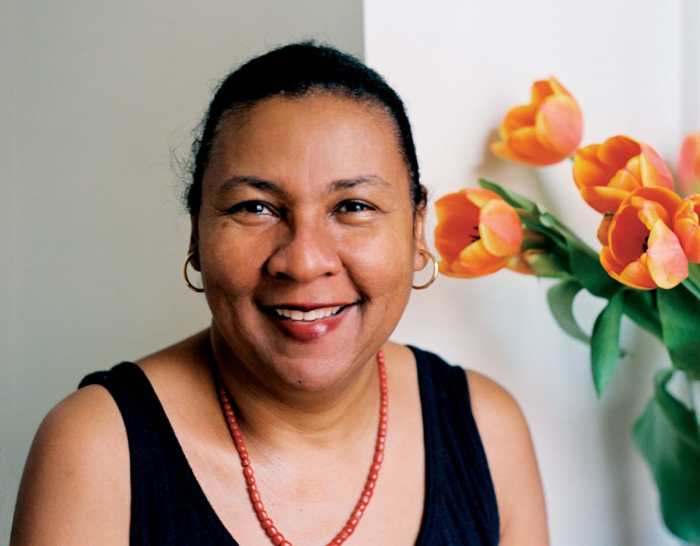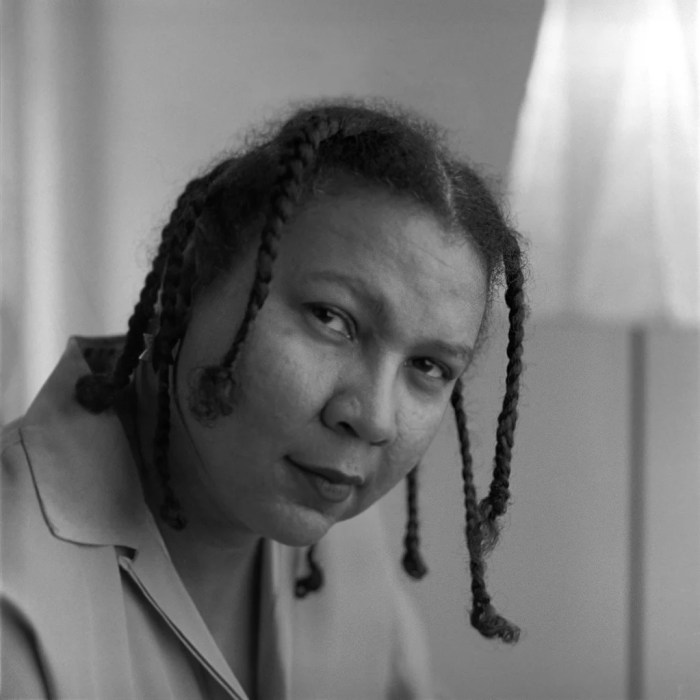Bell hooks paris is burning – As Bell Hooks’ Paris Is Burning takes center stage, this opening passage beckons readers into a world crafted with expertise, ensuring a reading experience that is both absorbing and distinctly original.
This documentary delves into the profound cultural impact of Bell Hooks’ work, exploring the ways in which it aligns with her theories on race, gender, and class. The film serves as a captivating lens through which we can examine the significance of voguing and the ballroom scene as forms of resistance and empowerment for marginalized communities.
Bell Hooks and Paris Is Burning
Bell Hooks’ work on race, gender, and class provides a framework for understanding the cultural significance of the documentary “Paris Is Burning.” The film explores the lives of Black and Latino drag queens in New York City, highlighting the challenges and triumphs they face in a society that often marginalizes them.
Identity and Representation, Bell hooks paris is burning
Hooks’ theories on identity and representation are evident throughout “Paris Is Burning.” The film shows how the drag queens create and perform their own identities, often in the face of discrimination and oppression. They use drag as a way to express themselves, challenge societal norms, and find a sense of community.
The acclaimed documentary “Paris Is Burning” by bell hooks delves into the vibrant and often misunderstood world of drag culture. While exploring themes of identity, acceptance, and self-expression, it provides valuable insights into the complexities of human behavior. For a deeper understanding of the psychological aspects of these themes, one can refer to the AP Psychology Unit 6 FRQ . Returning to “Paris Is Burning,” hooks’ work continues to inspire and provoke critical thinking about the intersection of race, gender, and sexuality.
For example, the film features the drag queen Dorian Corey, who speaks about the importance of being true to oneself. She says, “If you don’t live your truth, then who will?” This quote reflects Hooks’ belief that authenticity is essential for personal growth and liberation.
Voguing and the Ballroom Scene

Voguing and the ballroom scene emerged as powerful forms of resistance and empowerment for marginalized communities, particularly LGBTQIA+ individuals and people of color. These practices provided a space for self-expression, community building, and the challenge of societal norms.
Social and Political Implications
The ballroom scene created a counterculture that challenged mainstream beauty standards and social hierarchies. Voguing, with its stylized poses and movements, allowed participants to embody glamour and confidence, regardless of their background or societal labels. The scene also provided a sense of belonging and support for individuals who often faced discrimination and exclusion.
Self-Expression and Community Building
Voguing and the ballroom scene allowed participants to express their creativity and individuality. Through the creation of “houses,” groups of individuals formed chosen families that provided emotional support and a sense of community. The competitive nature of the scene encouraged participants to develop their skills and push their limits, fostering a sense of accomplishment and self-worth.
Gender and Identity in Paris Is Burning

Paris Is Burningpresents a nuanced exploration of gender and identity, challenging societal norms and revealing the fluidity and intersectionality of these concepts.
Queering Gender Roles
The film features individuals who identify as drag queens, drag kings, and trans women, disrupting traditional gender roles. Drag queens embody femininity while retaining masculine traits, challenging the binary notion of gender. Drag kings perform masculinity while identifying as women, further blurring gender boundaries.
Intersectional Identities
Paris Is Burningacknowledges the intersectionality of race, gender, and class in shaping experiences and identities. Black and Latinx LGBTQ+ individuals navigate multiple forms of oppression, often facing discrimination and marginalization. The film highlights the unique challenges and resilience of this community.
Fluidity and Evolution
The film depicts gender and identity as fluid and evolving concepts. Characters experiment with different identities, and their experiences shape their understanding of themselves. Paris Is Burningdemonstrates that gender is not static but rather a dynamic and personal journey.
Representation and Visibility: Challenging Stereotypes

Paris Is Burningshatters preconceived notions and prejudices, offering a nuanced portrayal of marginalized communities, particularly LGBTQ+ and POC individuals. The film challenges stereotypes by presenting the subjects’ complexities, vulnerabilities, and resilience.
The film’s impact extends beyond entertainment, as it has raised awareness and fostered empathy for these communities. By showcasing their experiences, the film helps break down barriers and fosters a more inclusive society.
Media Landscape
Paris Is Burninghas significantly contributed to a more representative media landscape. Its groundbreaking portrayal of marginalized communities has inspired other filmmakers and media professionals to create more inclusive content.
- The film’s success has led to increased representation of LGBTQ+ and POC characters in mainstream media.
- It has encouraged the creation of documentaries and films that explore the experiences of marginalized communities.
- The film’s influence has extended to fashion, music, and popular culture, contributing to a broader acceptance and celebration of diversity.
Historical and Cultural Context

New York City in the 1980s was a vibrant and tumultuous city, marked by both progress and challenges. The LGBTQ+ and POC communities faced significant discrimination and marginalization during this time period, but they also found ways to create their own spaces and cultures.
The AIDS crisis had a devastating impact on the LGBTQ+ community, particularly gay men. The lack of understanding and support from the government and the medical community led to widespread fear and stigma. Many LGBTQ+ people were forced to live in the shadows, afraid of losing their jobs, homes, or even their lives.
Despite the challenges, the LGBTQ+ and POC communities also found ways to thrive. The ballroom scene, which is featured in the documentary Paris Is Burning, was a vibrant and creative space where people could express themselves freely. The scene was a safe haven for many who felt marginalized by mainstream society.
The documentary Paris Is Burning reflects the social and political landscape of New York City in the 1980s. It shows the challenges and opportunities faced by the LGBTQ+ and POC communities during this time period. The film also celebrates the resilience and creativity of these communities.
Challenges Faced by the LGBTQ+ and POC Communities
- Discrimination in housing, employment, and public accommodations
- Violence and harassment
- Lack of access to healthcare and other essential services
- Stigma and social isolation
Opportunities for the LGBTQ+ and POC Communities
- The creation of safe and supportive spaces, such as the ballroom scene
- The development of a strong sense of community
- The emergence of new forms of art and culture
- The growth of political activism
Essential FAQs: Bell Hooks Paris Is Burning
What is the significance of Bell Hooks’ work in the context of Paris Is Burning?
Bell Hooks’ work provides a theoretical framework for understanding the experiences and struggles depicted in Paris Is Burning, particularly in relation to race, gender, and class.
How does the documentary align with Hooks’ theories on identity and representation?
The film reflects Hooks’ ideas about the fluidity and intersectionality of identity, challenging traditional gender roles and binary conceptions of identity.
What is the role of voguing and the ballroom scene in Paris Is Burning?
Voguing and the ballroom scene serve as forms of resistance and empowerment for marginalized communities, providing a space for self-expression and community building.